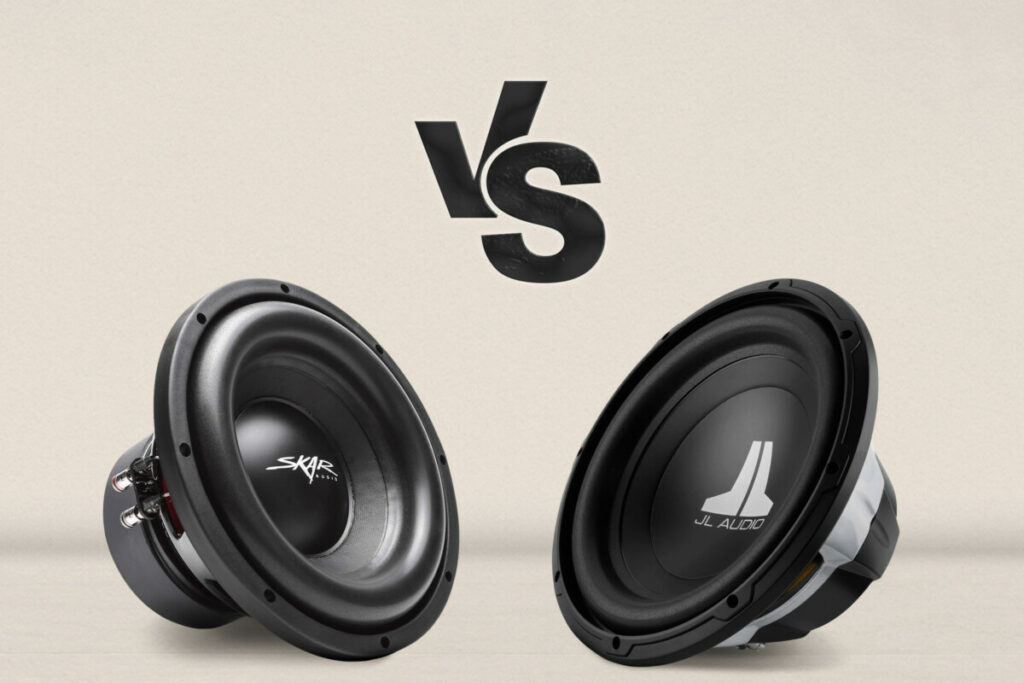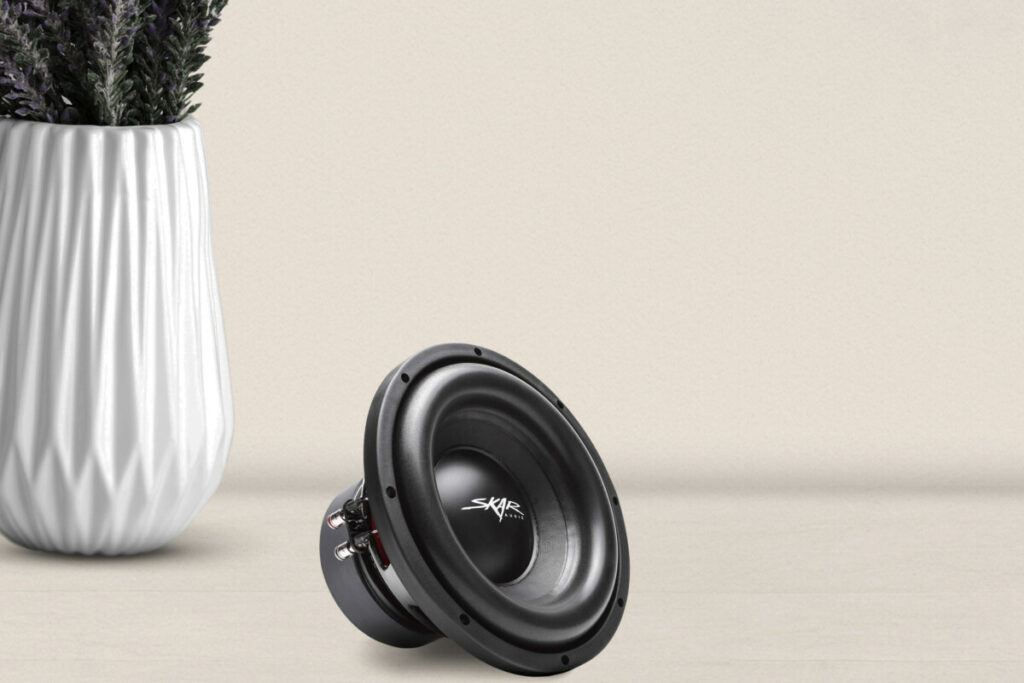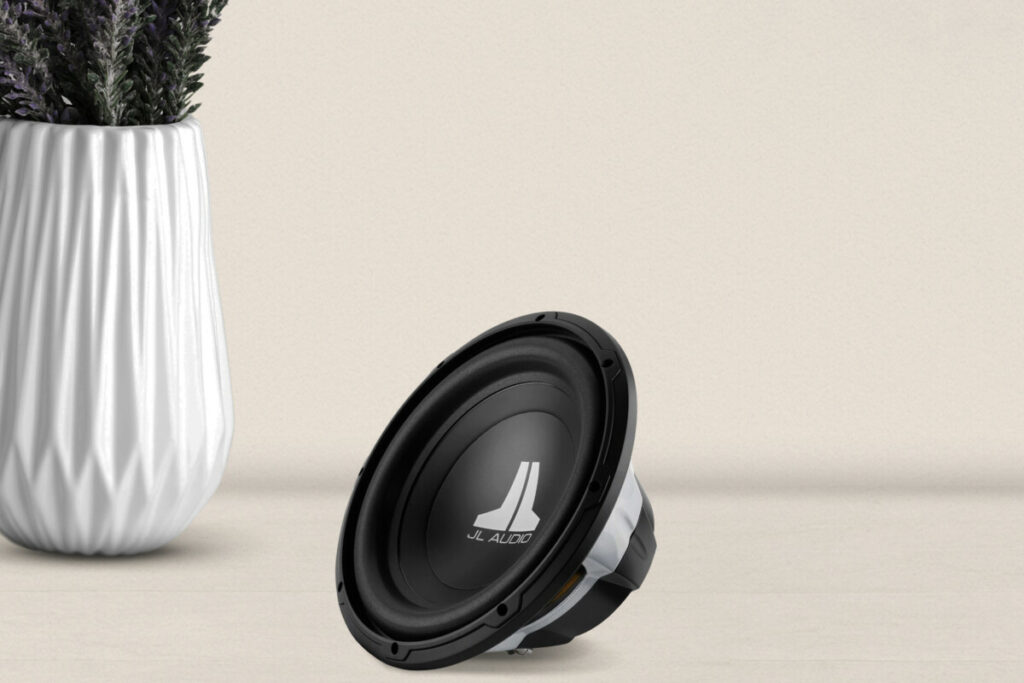
Are you trying to decide between 10″ and 12″ subwoofers for your audio setup? The size of the subwoofer is an important factor in determining sound quality, and it can be dificult to make a decision without understanding their differences.
In this article, well explore 10″ vs 12″ subwoofers so that you can make an informed choice when selecting one for your system. We’ll discus the pros and cons of each size, as well as how they compare in terms of power handling capacity, frequency response range, and overal sound quality.
With this information in hand, you will be able to determine which type of subwoofer best meets your needs.
Overview: 10″ and 12″ Subwoofer
10″ subwoofers are the most comon type of subwoofers and are perfect for those who want a compact size but don’t need extreme power handling capacity. 10″ subs ofer great sound quality at moderate volumes, with excellent bass response and clarity in the mids and highs.
12″ subwoofers are big, heavy and quite powerful than. 12″ subs produce deep bass tones, with greater power handling capacity and extended frequency response range. They are perfect suited for larger rooms or venues where louder volumes are required.
10″ Vs. 12″ Subwoofer: Key Differences

These two popular subwoofer sizes, 10″ and 12″ subwoofers, each have its own unique set of specifications and characteristics. In this comparison, we will delve into the details of each size and highlight the main diferences between them.
Size
Starting with size, the most obvious diference between 10″ and 12″ subwoofers is the diameter of the speaker cone. A 10″ subwoofer has a smaller diameter and is therefore more compact and can be instaled in tighter spaces, making it a popular choice for cars where space is limited.
On the other hand, a 12″ subwoofer has a larger diameter, which means it requires more instalation space. However, the larger size also means that it has a greater surface area and can therefore produce more sound than a 10″ subwoofer.
Power Handling
When it comes to power handling, the 12″ subwoofer is often the beter choice. Power handling refers to the amount of power a subwoofer can handle without distortion.
A 12″ subwoofer typically has a higher power handling capacity than a 10″ subwoofer, which means that it can handle more power without distorting the sound
At this part, you can also notice what type of subwoofer youre dealing with and you can also distinguish if it is an active or passive subwoofer. If it consumes more power it is an active one!
This makes a 12″ subwoofer more suitable for high power systems, such as those used in home theatres or for music genres with powerful baslines.
Frequency Response
The frequency response of a subwoofer refers to the range of frequencies it can produce accurately. A subwoofer with a wide frequency response can produce a wide range of frequencies, while a subwoofer with a narow frequency response can only produce a limited range of frequencies. A 12″ subwoofer typically has a lower frequency response than a 10″ subwoofer, which means it can produce lower frequencies more acurately.
Sensitivity
Finaly, we have sensitivity, which refers to the subwoofers ability to convert power into sound. A higher sensitivity rating means that a subwoofer can produce more sound with les power, while a lower sensitivity rating means that a subwoofer requires more power to produce the same amount of sound.
A 10″ subwoofer typically has a higher sensitivity rating than a 12″ subwoofer, which means that it is more eficient and can produce more sound with less power. This makes a 10″ subwoofer a good choice for systems where space is limited or for those who want to conserve power.
In conclusion, choosing between a 10″ and 12″ subwoofer ultimately depends on your personal preferences and requirements.
So, a 10″ subwoofer is a good choice for tight spaces and for those who want to conserve power, while a 12″ subwoofer is better suited for high power systems and for those who want powerful low-frequency bass, but still, what is improtant to know is also the place where you put the subwoofer, as some people choose to put them behind their TVs, without knowing whether it is the right decision or not.
Choosing Between 10” and 12” Subwoofers

When choosing between a 10″ and 12″ subwoofer, there are several important factors to consider:
Installation Space: The first factor to consider is the installation space you have available. A 10″ subwoofer is smaller in size and can fit in tighter spaces, while a 12″ subwoofer requires more installation space.
Basically, when it comes to the installation space, and the way a subwoofer will fit in that particular space, it is important to know how to measure a subwoofer, in order to make the right purchase.
Power Handling: Power handling refers to the amount of power a subwoofer can handle without distortion. A 12″ subwoofer typically has a higher power handling capacity, making it a beter choice for high power systems.
Frequency Response: The frequency response of a subwoofer refers to the range of frequencies it can produce accurately. A 12″ subwoofer typicaly has a lower frequency response and can produce lower frequencies more accurately.
Sensitivity: Sensitivity refers to the subwoofer’s ability to convert power into sound. A 10″ subwoofer typicaly has a higher sensitivity rating, meaning it can produce more sound with less power.
Sound Quality: Consider the sound quality you want to achieve. A 12″ subwoofer can produce powerful low-frequency bass, while a 10″ subwoofer is more eficient and can produce more sound with less power.
Music Genre: The type of music you listen to can also play a role in choosing the right subwoofer size. If you listen to music with heavy bass, a 12″ subwoofer may be the better choice.
Budget: Consider the cost of the subwoofer and wether you have a budget to stick to. 12″ subwoofers are often more expensive than 10″ subwoofers.
Conclusion
So, as you cn read through the article, the 10” and 12” subwoofers are two great choices for you in terms of the overall sound quality and listening experience, but choosing between them is always related to some more specifications.
Anyways, I hope you liked what you read thus far, and I hope this article provided you with everything you needed to know! Good luck!
Sound Artist
I’m a Sound Artist creating immersive sonic experiences. I turn everyday objects into music, turning the mundane into something marvellous!





